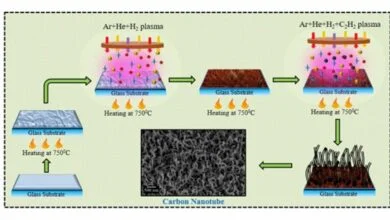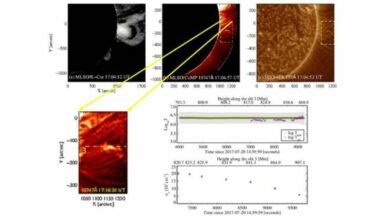Intelligent Cameras that Improve Human Recognition

Intelligent cameras, that achieve spectral resolution as well, are the next milestone in picture and video processing.
A group of analysts at the Chair of Multimedia Communications and Signal Processing at Friedrich-Alexander-Universitat Erlangen-Nurnberg (FAU) has developed such an intelligent camera that achieves not only high spatial and temporal resolution but also spectral resolution.
The camera has a wide range of applications that can improve environmental protection and resource conservation measures as well as autonomous driving or modern agriculture. The findings of the research have been published as an open-access publication. “Research up to now has mainly focused on increasing spatial and temporal resolution, which means the number of megapixels or images per second,” said lecturer Dr Jurgen Seiler.
‘Spectral resolution — the wavelength and thus the perception of colours — has largely been adjusted to match human sight during the development of cameras, which merely corresponds to measuring the colours red, green, and blue.
However, much more information is hidden in the light spectrum that can be used for a wide range of tasks. For example, we know that some animals use additional light spectra for hunting and searching for food.
3 resolutions in one camera

Seiler, who is an electrical architect, has built up a high-resolution multi-spectral camera that enhances human perception with his group at the Chair of Multimedia Communications and Signal Processing (LMS), drove by Prof. Andre Kaup at FAU. It consolidates every one of the three goals – spatial, fleeting and phantom – in a cost-proficient arrangement.
“Up to now, there were only extremely expensive and complex methods for measuring the ultraviolet or infrared ranges of light or individual spectral bands for special industrial applications. We looked for a cost-efficient model and we were able to develop a very cost-effective multi-spectral camera,” said Seiler.
The scientists associated a few economical standard cameras with different ghastly channels to frame a multi-phantom camera exhibit.
“We then calculated an image in order to combine the various spectral information from each sensor. This new concept enables us to precisely determine the materials of each object captured using just one single image,” said Nils Genser, a research associate at LMS.
Simultaneously, the new camera is incredibly better than existing frameworks as far as its spatial, temporal and spectral resolution. As the environmental factors are recorded by a few “eyes” just like the case with human sight, the system additionally gives an exact sign of profundity. This implies that the framework not just definitely decides the shading and certain material properties of items it catches, yet additionally the separation among them and the camera.
Ideal for self-driving and natural innovation

Autonomous driving is a potential application for these new intelligent cameras. “A whole range of solutions to various problems has now opened up, thanks to our new technology,” said Seiler.
“In the infrared range, for example, we can differentiate between real people and signposts using the thermal signature. For night driving, we can detect animals crossing the road with sufficient warning,” added Seiler.
The high-resolution multi-spectral cameras could also be used for protecting the environment and conserving resources. “Several plastics differ significantly from each other in various ranges of the spectrum, which is something the new intelligent camera can reliably detect. Large amounts of plastics are simply burned instead of separated for recycling as they have a similar appearance. We can now separate them reliably,” Genser said.
The post Intelligent Cameras that Improve Human Recognition appeared first on .








